Ever Wondered How A Tennis Ball Is Made?
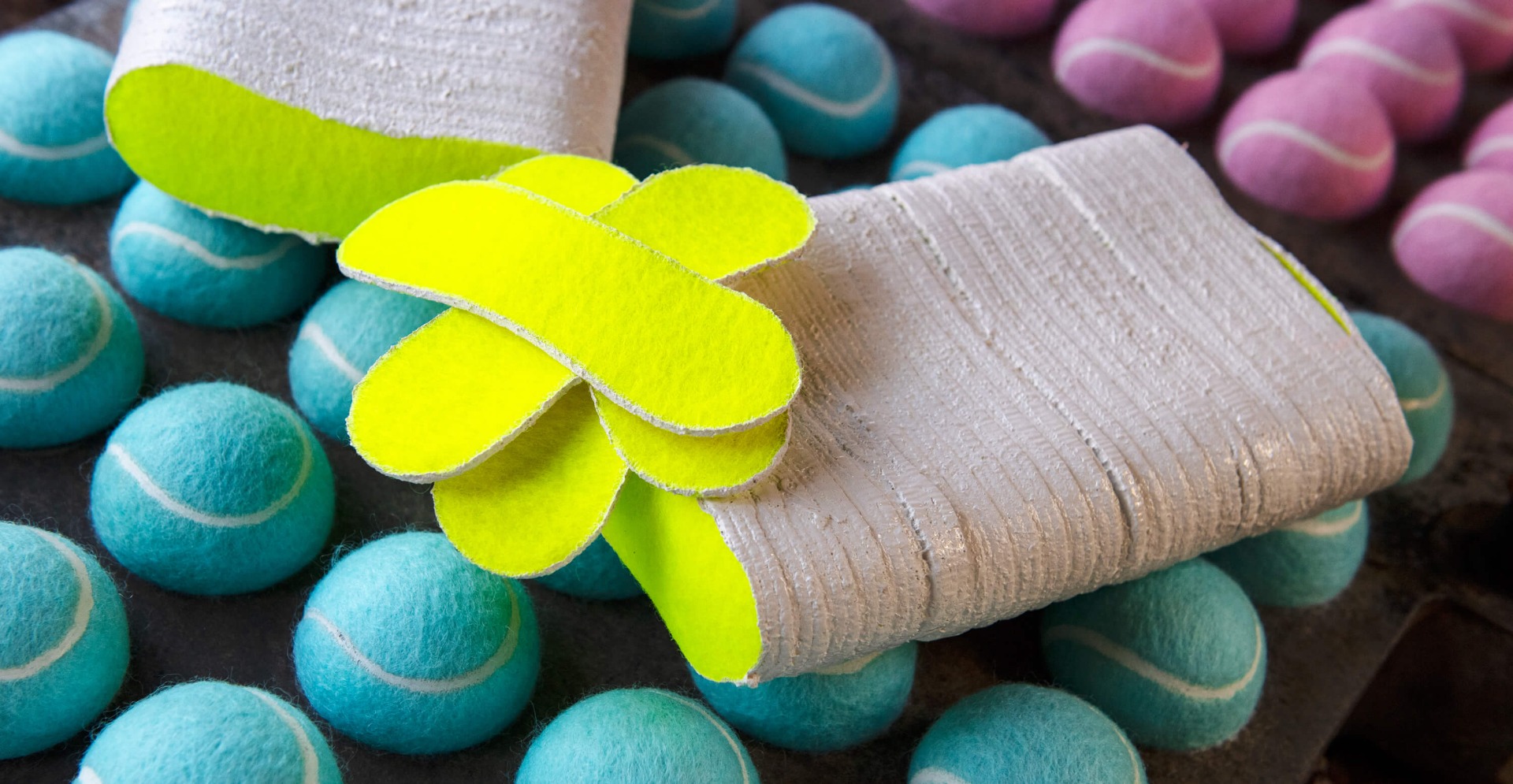
Ever Wondered How a Tennis Ball is Made?
Here's a behind-the-scenes look at the process of manufacturing tennis balls.
New Balls, Please!
Have you ever wondered about the process of manufacturing tennis balls? We have been in the tennis ball business since 1936 here at Price of Bath, and over the decades have seen many different types of ball and manufacturer come and go. We are uniquely placed in our knowledge of ball-making to give you some interesting insight into their manufacture, and would like to share with you the hand crafted traditional way that balls are still made at our factory. We like to think we have made the art of making a tennis ball into something of a heritage craft! To us, the production of a perfect tennis ball requires so much more than just a few strips of felt and a little bit of rubber, in fact the process of making premium balls requires exacting scientific specifications. While tennis fans are usually fascinated by the technique of the player during a tennis match, what is often overlooked is the technical precision of the ball itself. An essential part of the game, tennis balls need to reach extremely high technical standards, bouncing with a perfect consistency. Consequently, their manufacture is something of a scientific marvel, making them one of the most complex sporting balls to produce due to this exactness of specification.
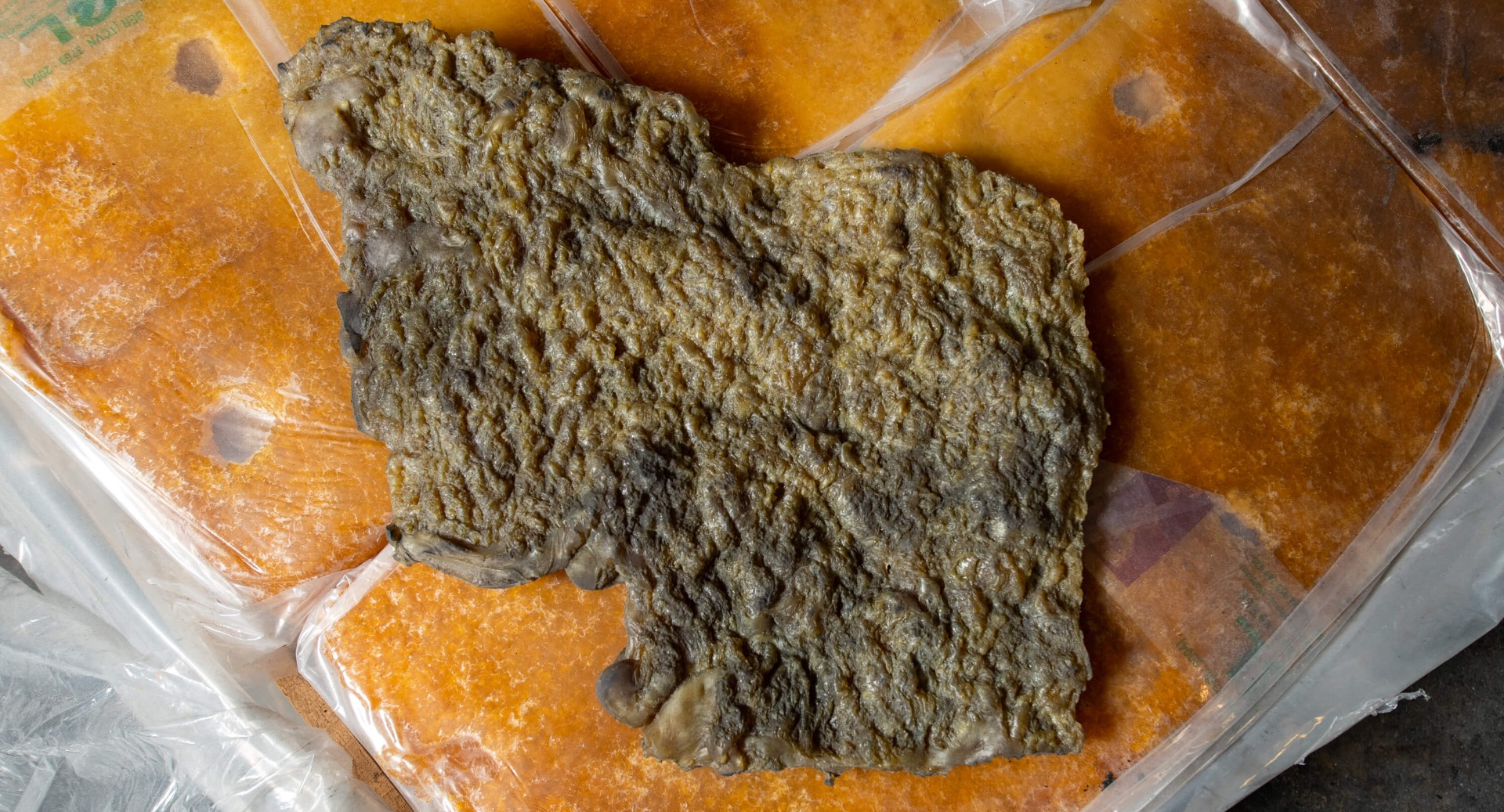
Milling The Rubber
The first job in the process is to mix the raw ingredients, by far the biggest of which is rubber. We import bales of rubber from suppliers in Malaysia. It is, of course, the rubber that gives the balls their bounce. But to get it into a state where we are able to mix other ingredients with it we need to masticate it on our mill. Mastication squashes and stretches the natural rubber, breaking the chemical chains and making it soft and pliable and turning it darker in colour (you can see the masticated rubber on top of the virgin rubber bales pictured above).
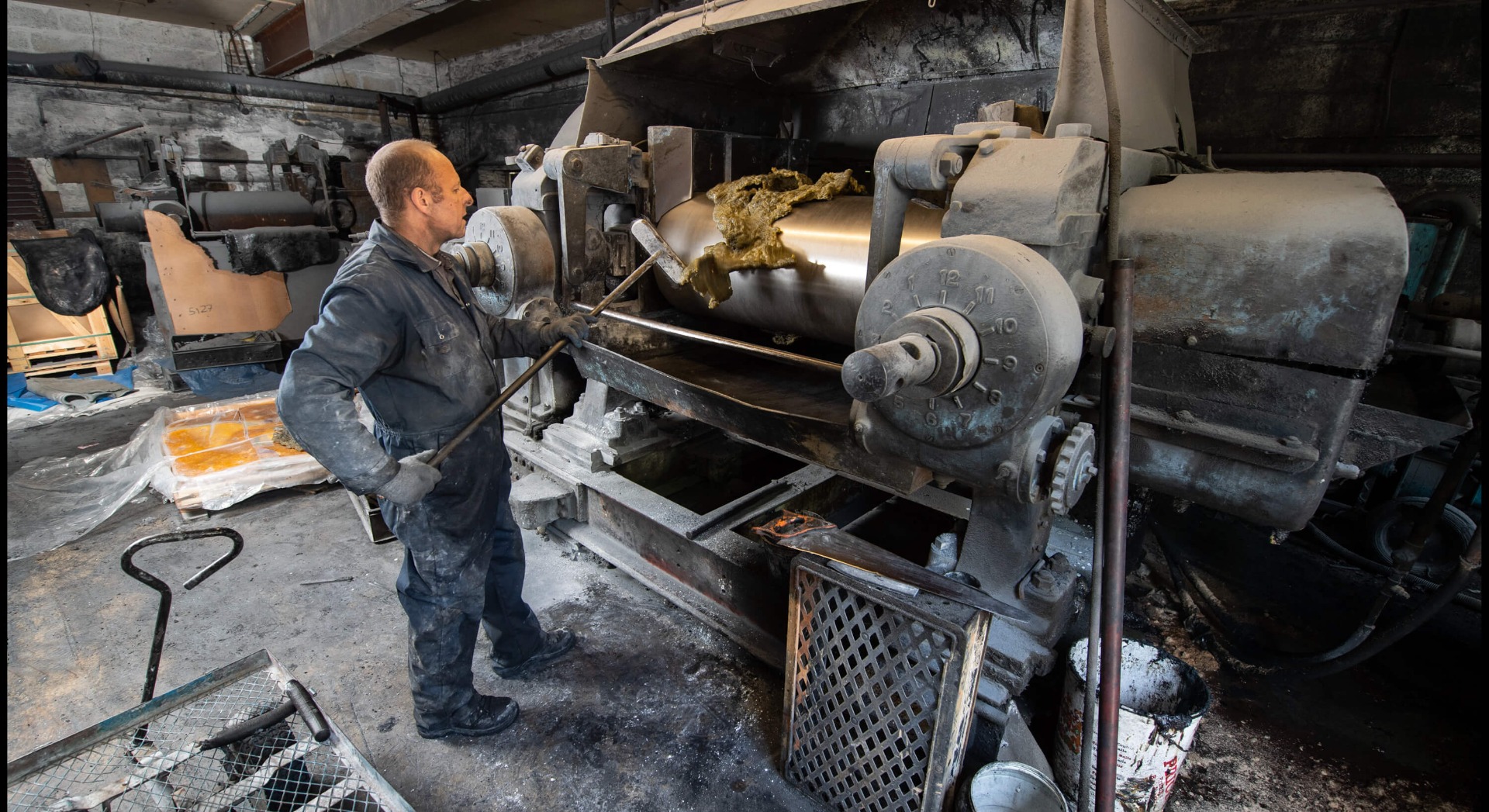
Mastication and mixing happens in this 60-year-old milling machine, affectionately known here at Price of Bath as ‘The Beast’ (above). It’s a massive machine comprised of two iron rollers. Before the masticated rubber can be moulded into a ball shape we have to add up to a dozen other ingredients to the milled rubber. Each ball has a different formulation consisting of accelerators (chemicals that help the rubber ‘cook’) and a number of other chemicals like Magnesium Sulphate and Stearic Acid that help perfect the weight, bounce and structure of the ball. Each ball has precise mixes of ingredients, be it a regular tennis ball or a child’s mini ball. The mixing is quite a lengthy process to ensure a thorough combination important for the balls consistent performance. It’s a fine-tuned method; if it’s mixed too long the rubber could get far too hot and ‘over-cook’. Crucially, balls should offer just the right amount of bounce, between 135cm and 147cm when dropped from a height of 254cm at sea level at 20 degrees C. It’s all very technical, but thankfully we have a team of experienced professionals with decades experience of crafting balls to call upon.
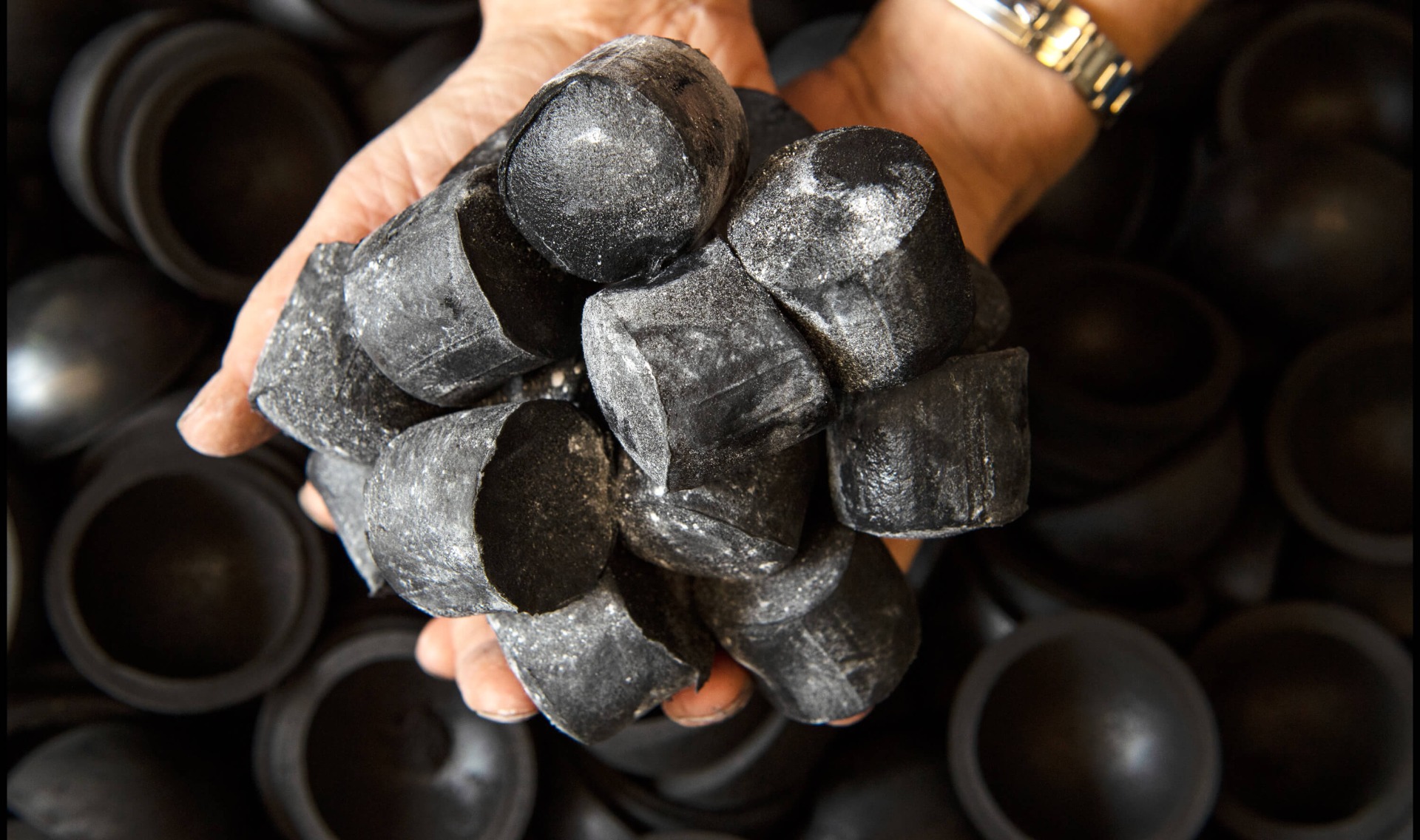
Producing Rubber Pellets
When everything is blended consistently together the rubber is rolled off the machine in a long sheet and is quickly transferred to the next stage, dividing the rubber into portions called pellets ready for moulding. The rubber is between 50-60°C when it comes off the mill, as it cools it becomes harder to work with so time is of the essence at this stage of the process. The rubber is fed into an extruding machine and pressure squeezes it out into a sausage shape that is instantly sliced into the required weight as it leaves, the device being set with the precise measurements for each ball type. The pellets drop onto a travelator and are transported to a bath of anti-tack solution to ensure the hot pellets don’t stick together, within a few minutes they will be cold and ready for the next stage.

Moulding A Half-Shell
The next step is to take the pellets to be moulded into half-shells. Each 25g pellet contains the perfect amount of materials to make one half of a ball. The pellets are loaded into a press and squeezed into shape. It cooks on a 2.5 minute cycle, under a pressure of 200 tonnes (equivalent to the weight of several lorries) the rubber is pushed into the mould. The half-ball shells come out of the mould in a sheet of 36 (above), and the sheets are then punched out into single half-shells (below).

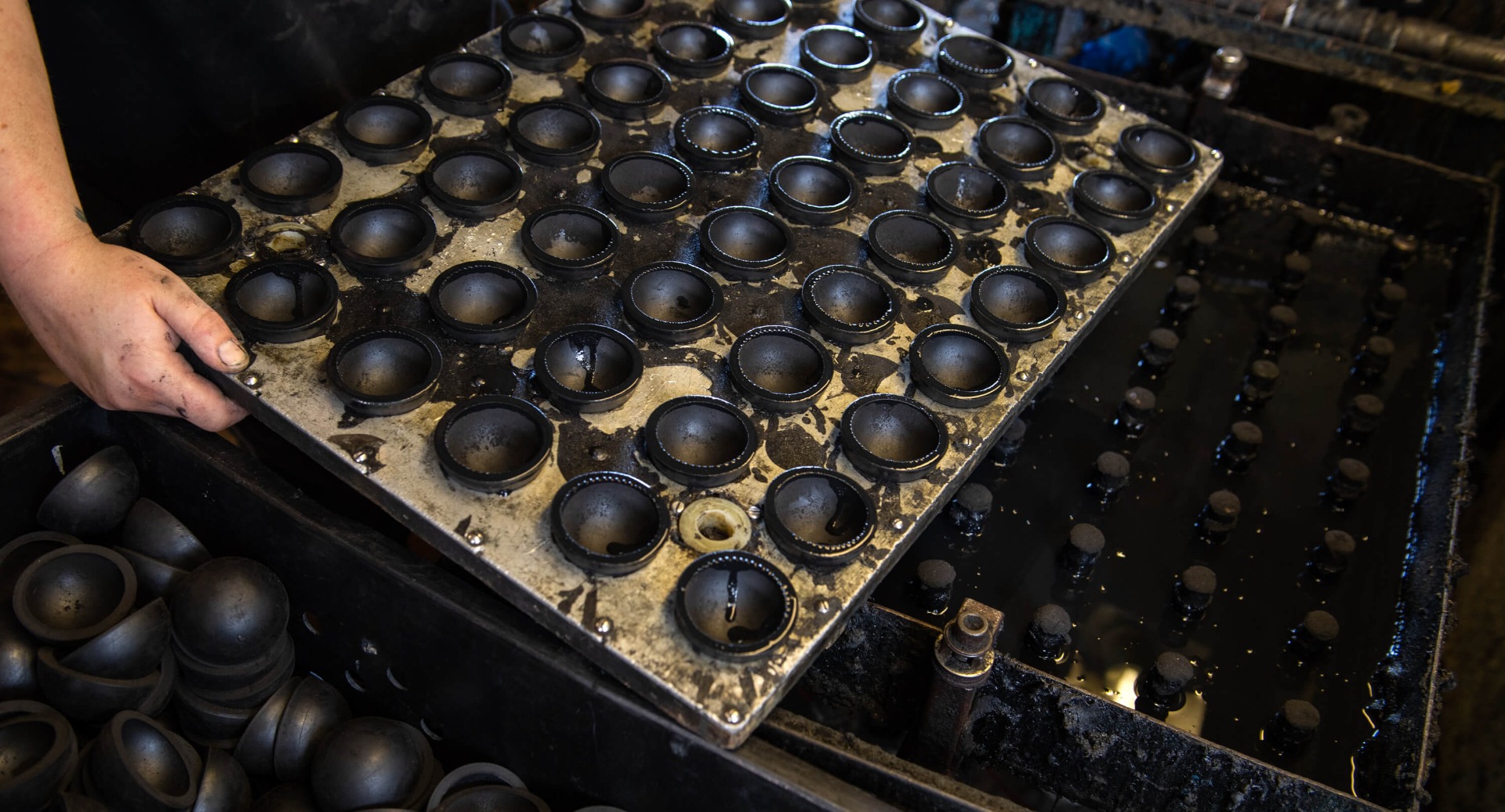
Joining The Half-Shells
The next process is the joining stage. We load a tray with joining solution which is then filled with half-shells of balls. Once they are in position they are dipped to have a layer of glue on their rim to ensure they are tacky and ready to join together with their other half (see above). A vacuum pump is used to position a tray of glued halves onto their other halves, before being sorted in racks ready to be permanently sealed together. The balls are loaded in a particular way to make sure they get just the right amount of pressure around the joint. They will need to withstand serves that can exceed 100 miles per hour so the glue needs just the right amount of time to cure in order to fuse the two halves together securely. The balls are then heated to 150°C for 20 minutes, the pressure of the clamp melding the two halves of the ball together to produce the round inner ball (below).


Adding Adhesive
After cooking, the balls are dropped into a huge spinning vat of white glue, which needs to be applied to help the felt cover adhere to the ball surface. The balls are tumbled in the vat for ???? minutes to ensure an even coating of the highly tacky solution. Once the required amount of glue has been applied the balls are lined up ready for the next stage (above).

Felting The Ball
For covering the balls we use flexible teams of homeworkers. They have bags of ‘solutioned’ balls and blocks of cloth (above) delivered to their home twice a week. To cover a tennis ball, the skill is all about the positioning of the felt, and we can assure you it’s not a simple task and it’s all too easy to make a mistake. Misjudge the felt by a fraction and the ball is ruined. During the Wimbledon fortnight and the Christmas season, our coverers are always working flat out to meet the extra demand for tennis balls!


Dipping The Felt
From this stage, the edges and underside of the felt is now dipped in a rubber solution which allows the two halves of the ball to be stuck together (above).
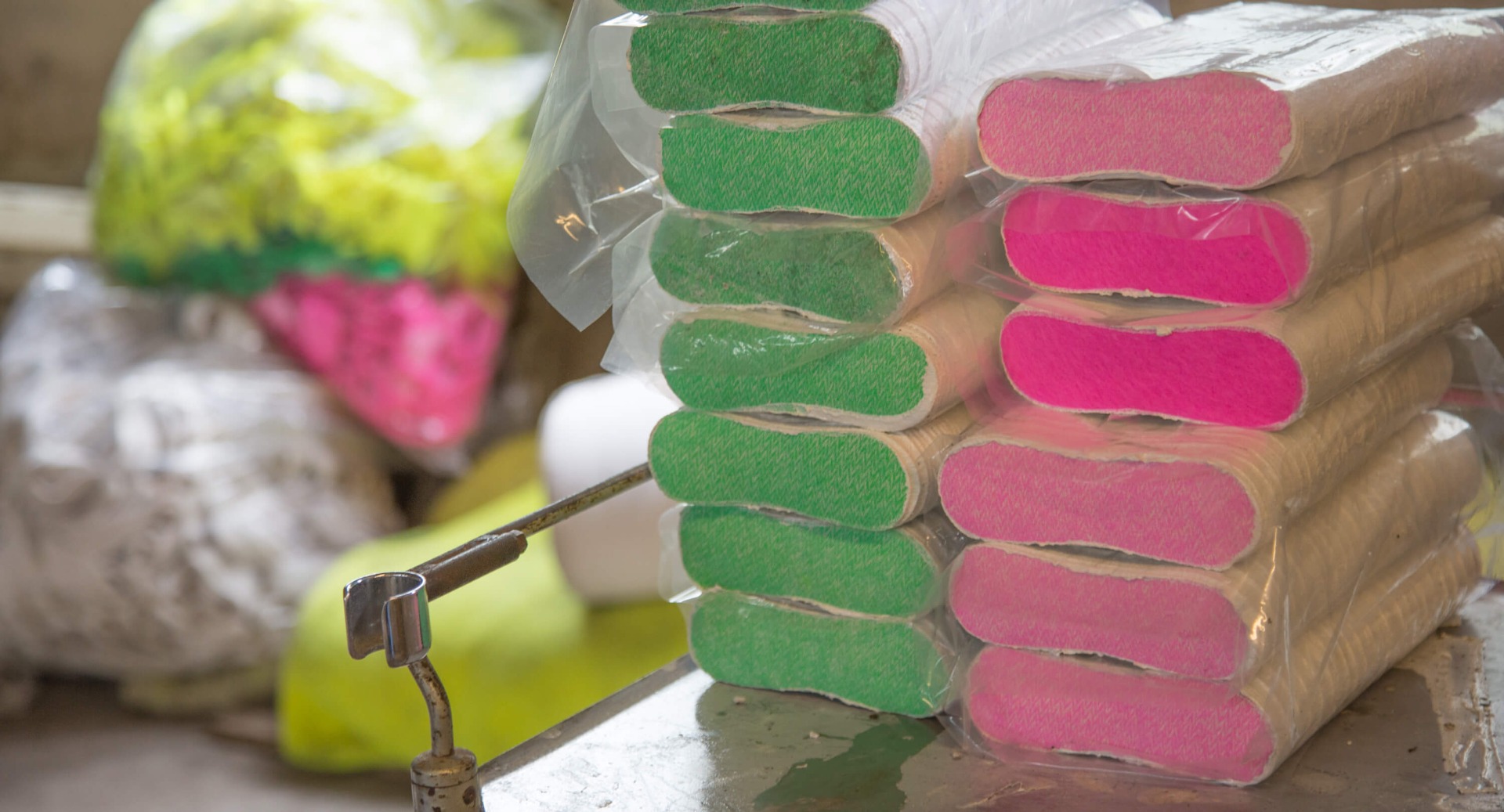
The Covering Process
Once ‘solutioned’ with glue the balls are ready to be covered with felt. The cloth is a blend of wool and nylon and is cut from huge rolls (above). We source our felt from a factory just down the road in Stroud. Figure eight shapes are cut from the roll, with two covering each ball. We use a fly press and manually punch out 4 strips at a time. It takes an hour to punch 18 blocks, which will cover 648 balls (below). The most popular colour, ‘Optic Yellow’, was developed in 1972 to help TV viewers more easily spot the ball. Up until then tennis balls were either white or black. Nowadays we make balls in a whole rainbow of different colours here at Price of Bath


Sealing The Felted Ball
The final stage is to seal the two pieces of cloth together in the finishing mould (above). We are a steam-powered factory, all the machines and moulds are powered by steam and cooled by water. The cycle for this process runs for 20 minutes, the moulds are heated up to 141°C causing the solution around the ball to melt, locking the rubber ball to the felt covering. You can see below the difference between a covered ball (left) and the finished heat-sealed ball (right).

Once the balls are unloaded from the mould they are ready to be inspected and packed. The manufacturing process of the tennis ball is now complete. The balls can now be vacuum tubed in readiness to be shipped to our customers and enjoyed on court!

Price of Bath is proud to be continuing to manufacture quality tennis balls in the UK. We now use recycled materials in all our tennis balls, continuing to innovate, our newest creation is the Phoenix Recycled Tennis Balls. Find out more about it here: Phoenix Recycled Tennis Balls.
